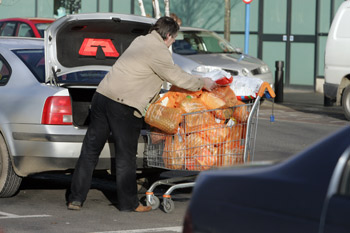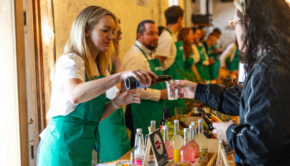Shoppers stay at home but prices still considered high

Fionnuala Carolan reports on the latest Kantar figures which show that while cross-border shopping has fallen, overall shopper spending still remains subdued.
12 July 2012
The latest Kantar Worldpanel research has revealed that cross-border shopping has decreased over the past few years. During the latest quarter only 8% of households in Ireland bought their groceries from Sainsbury’s or Asda in Northern Ireland, contrasting with 16% during the same period in 2009. At one point cross-border trade was a huge issue for retailers, not just for those on the border but as far south as Dublin and the surrounding counties. There was such a disparity in price between the north and the south that even after filling the car with petrol, driving for a few hours and paying for lunch, shoppers were still saving money.
While the cost of fuel and a weakened euro are two of the main reasons for people shopping closer to home these days, there is also much better value to be had here now. The Irish retail industry has been forced to bring down prices and concentrate on improving its own brand and value lines to entice shoppers to spend their money in their local communities.
Traditionally alcohol was one of the main draws for people to travel to the north but now alcohol is being used by many supermarkets as a loss leader and there are calls for minimum pricing to be introduced again. Could the abolition of the Groceries Order have been a little premature perhaps?
While retailers are making a concerted effort to keep shopppers spending locally, overall shopper spending remains subdued due to the reduced incomes of many consumers. This is helping the discounters gain more and more market share. Aldi and Lidl combined now take 12% of the market which is a real signal as to how the Irish now choose to shop. Aldi has recorded sales growth of just over 20% bringing its total share to 5.3% and Lidl now has a 6.5% share.
However Tesco and SuperValu also continue to gain market share, with sales growth of 2.8% and 1.1% respectively in the last month. This is due to new store openings and continued value from Tesco and the launch of SuperValu’s own brand range has encouraged new spend.
According to Kantar, rounded euro priced goods of €1 or €2 now account for 12% of grocery sales. A majority of retailers, including independents and supermarkets, have adopted round euro pricing tactics to encourage impulse purchasing and help shoppers stick to their budgets.
Despite all this a recent Eurostat survey has claimed that Ireland is the fifth highest priced country in the EU for food and non-alcoholic beverages. The Irish Farmers Association (IFA) reacted to these new figures by repeating its call for a government code of practice to curb supermarket power because Tesco, Dunnes and Musgraves control 80% of the grocery market.
While Irish prices are still considered high in comparison to other countries, we have to look at the old issues of business costs here. Rents and rates and a high minimum wage means that prices here will never match those of say eastern European countries where these kinds of costs are but a fraction of what we pay. For the moment we should be happy that fewer are migrating to the north to shop and that the industry has reacted to a changing consumer landscape.
In other news, this is our GRAM issue and we have seven pages full of pictures and profiles of the winning managers.
Fionnuala Carolan
Editor



 Print
Print






Fans 0
Followers